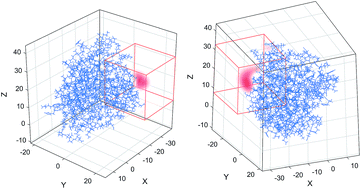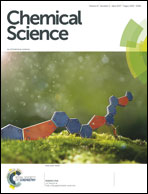Model-free extraction of spin label position distributions from pseudocontact shift data†
Abstract
A significant problem with paramagnetic tags attached to proteins and nucleic acids is their conformational mobility. Each tag is statistically distributed within a volume between 5 and 10 Angstroms across; structural biology conclusions from NMR and EPR work are necessarily diluted by this uncertainty. The problem is solved in electron spin resonance, but remains open in the other major branch of paramagnetic resonance – pseudocontact shift (PCS) NMR spectroscopy, where structural biologists have so far been reluctantly using the point paramagnetic centre approximation. Here we describe a new method for extracting probability densities of lanthanide tags from PCS data. The method relies on Tikhonov-regularised 3D reconstruction and opens a new window into biomolecular structure and dynamics because it explores a very different range of conditions from those accessible to double electron resonance work on paramagnetic tags: a room-temperature solution rather than a glass at cryogenic temperatures. The method is illustrated using four different Tm3+ DOTA-M8 tagged mutants of human carbonic anhydrase II; the results are in good agreement with rotamer library and DEER data. The wealth of high-quality pseudocontact shift data accumulated by the biological magnetic resonance community over the last 30 years, and so far only processed using point models, could now become a major source of useful information on conformational distributions of paramagnetic tags in biomolecules.



 Please wait while we load your content...
Please wait while we load your content...